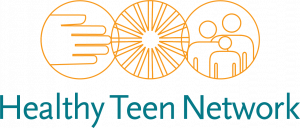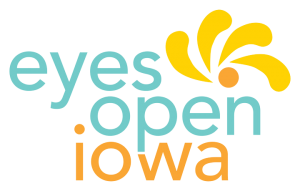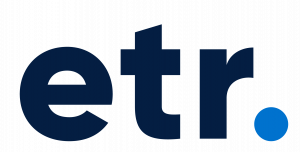This workshop will teach participants about the fundamentals of sexual orientation, gender identity, and how to ensure that all young people and their families feel welcome and included in our classrooms and programs. The first part of the workshop will provide basic information about sexual orientation and gender identity, as well as dispel common myths. The second part of the workshop will focus on ways to create safe learning environments for students who are lesbian, gay, bisexual, and/or transgender (LGBT) or whose family members might be. It will also provide concrete lessons for teaching LGBT issues directly to young people. This workshop can be tailored to meet the specific needs of your group, school, or agency. All content is aligned with the National Sexuality Education Standards, National Teacher Preparation Standards for Sexuality Education, and the Professional Learning Standards for Sex Education
Training Hub
The Sex Education Collaborative Training Hub lists trainings for sex educators, facilitators, and other professionals on best practices for sharing important information with clients and the public. From teaching anatomy inclusively to effectively addressing bias in the classroom to addressing racial justice and equity in sex education, the Training Hub includes trainings, technical assistance, and policy support from state, regional, and national leaders in the field of sex education.
Please note: The Training Hub includes both in-person and online professional trainings. If you see a training you are interested in and it isn’t listed as virtual, please reach out directly to any of our members to find out what's possible!
Trainings Offered by State-Based and National Organizations
Displaying results 131 - 135 of 137Working with LGBTQ Youth
- Indicator 1 (K-12): Demonstrate three techniques to create an inclusive and affirming learning environment. (S)
- Indicator 7 (K-12): Demonstrate the ability to analyze and tailor lesson plans to match the age, developmental stages, cultural backgrounds, and other identities of students. (S)
- Indicator 1 (K-12): Explain how availability of supportive school staff, presence of Gay-Straight Alliances (GSAs), LGBQ-inclusive curricular resources, and the presence of comprehensive, enumerated anti-harassment school policies are related to improved school climate for students of all sexual orientations.
- Indicator 2 (K-12): Define sexual orientation and sexual identity, including that everyone has both.
- Indicator 3 (6-12): Explain the difference between sexual orientation, sexual behavior, and sexual identity.
- Indicator 4 (K-12): Demonstrate the use of inclusive and affirming language. (S)
- Indicator 5 (K-12): Demonstrate the ability to intervene effectively in homophobic and other bullying comments and actions. (S)
- Indicator 6 (K-12): Explain three ways that LGBQ+ youth are at disproportionate risk for health disparities.
- Indicator 7 (K-12): Identify three credible, medically accurate, youth-friendly resources that can provide information or support related to sexual orientation.
- Indicator 2 (K-12): Demonstrate the use of inclusive and affirming language. (S)
- Indicator 3 (K-12): Define gender identity and sex assigned at birth.
- Indicator 4 (K-12): Explain how gender identity and gender expression are distinct from each other and from sexual orientation.
- Indicator 5 (K-12): Demonstrate the ability to intervene effectively in transphobic, sexist, misogynistic and other gender-related bullying comments and actions. (S)
- Indicator 7 (K-12): Identify three credible, medically accurate, youth-friendly resources that can provide information or support related to transgender and gender expansive people.
Unlocking the Secrets of Classroom Management
What student behaviors do you find most challenging? What techniques can you use to respond to these behaviors? Explore essential classroom management techniques for the sex education classroom. Take a peek at a few different kinds of sex education classrooms, as well as number of challenging behaviors and some techniques to address them.
- Indicator 1 (K-12): Demonstrate the ability to build rapport with students. (S)
- Indicator 2 (K-12): Demonstrate three student-centered instructional approaches that support a variety of learning styles. (S)
- Indicator 3 (K-12): Explain the differences between positive vs. shaming approaches to teaching sex education.
- Indicator 5 (K-12): Describe three effective strategies for practicing skills with students.
- Indicator 1 (K-12): Explain three reasons why it is important to respond to every question students ask when teaching sex education.
- Indicator 2 (K-12): Demonstrate the ability to effectively respond to three different types of challenging questions. (S)
Virtual PD - Creating LBGQ Inclusive Classrooms
Virtual Professional Development is a simulated classroom where teachers can practice teaching student avatars using short scenarios and support from an instructional coach, so they can quickly learn and master the skills they most need to be effective. With upper elementary, middle and high school classrooms, Virtual PD has scenarios for teachers of all grade levels across a wide range of topics aligned with the Professional Learning Standards for Sex Education (PLSSE). You can watch the video here to learn more about Virtual PD.
Using the Virtual Professional Development simulated classroom, the educator will practice Creating LGBQ Inclusive Classrooms with the student avatars. In this VPD scenario, the participant will need to demonstrate the use of inclusive and affirming language and the ability to intervene effectively in homophobic and other bullying comments and actions. The educator will introduce the topic of STDs and ask each student to share one behavior they have heard that can place someone at risk for getting an STD. This scenario can be used with high school or middle school students.
- Indicator 4 (K-12): Demonstrate the use of inclusive and affirming language. (S)
- Indicator 5 (K-12): Demonstrate the ability to intervene effectively in homophobic and other bullying comments and actions. (S)
Navigating the complexities of sexual health education policies can be challenging, but with EyesOpenIowa by your side, you don’t have to do it alone. Our experienced team is here to help you develop, refine, and implement policies that align with best practices, legal requirements, and the unique needs of your community.
Customized Policy Development We work with you to create tailored policies that reflect your organization’s values and objectives. Whether you’re establishing new guidelines or updating existing ones, we ensure your policies are comprehensive, inclusive, and compliant with all relevant laws and regulations.
Alignment with Legal and Educational Standards Our experts help you navigate state and federal mandates, ensuring your policies meet all legal requirements while supporting effective sexual health education. We provide clear, actionable guidance to keep your organization in full compliance.
Inclusive and Culturally Responsive Policies We specialize in crafting policies that promote inclusivity and cultural responsiveness. Our team ensures your policies address the needs of all students, including those from diverse backgrounds and LGBTQ+ communities, fostering an environment of respect and equity.
Ongoing Support and Consultation Policy development is an ongoing process, and we’re here to support you every step of the way. Our team offers continuous consultation and review services, helping you adapt to new challenges and opportunities as they arise.
Partner with EyesOpenIowa to create policies that not only meet legal standards but also empower your educators and students. Our customized, expert-driven approach ensures your policies are effective, inclusive, and sustainable.
Cultural Humility
As youth-serving professionals, we play a critical role in empowering young people by ensuring that they are equipped with the education, skills, support, agency, and resources needed to live healthy lives. To foster such empowerment, it is essential to create safe and inclusive environments for the diverse youth with whom we work. By engaging in the practice of cultural humility, which incorporates openness, self-awareness, and self-reflection in interactions with diverse individuals, youth-serving professionals can increase their self-awareness, examine personal biases, and enhance their communication skills, thereby strengthening their ability to provide culturally appropriate services for diverse and vulnerable youth.
Objectives of this training:
- Describe the tenets of cultural humility at the intrapersonal, interpersonal, and organizational levels.
- Apply communication strategies to reduce assumptions and stereotyping at the interpersonal level.
- Identify language and behaviors that contribute to or detract from actualizing the principles of cultural humility.
- Indicator 2 (K-12): Describe three impacts that conscious and unconscious bias could have on cross-cultural interactions when teaching sex education.
- Indicator 4 (K-12): Describe three strategies to reduce the impact of conscious and unconscious bias and enhance cross-cultural interactions in the classroom when teaching sex education.
- Indicator 2 (K-12): Demonstrate three strategies for creating culturally responsive classrooms. (S)
Additional Trainings offered by out-of-state organizations
- ‹ previous
- 26 of 49
- next ›
How to Have ‘The Talk’ with Teens
By the end of this lesson, participants will gain knowledge and develop skills required to have an open conversation with teens about their sexual and reproductive health.
This training is designed for:
- Parents
- Clergy
- Community Workers
- Indicator 1 (K-12): Describe how puberty prepares the human body for the potential to reproduce.
- Indicator 2 (K-12): List three physical, three social, and three emotional changes that occur during puberty.
- Indicator 3 (K-12): Identify three practices that students can adopt for maintaining healthy habits beginning during puberty.





